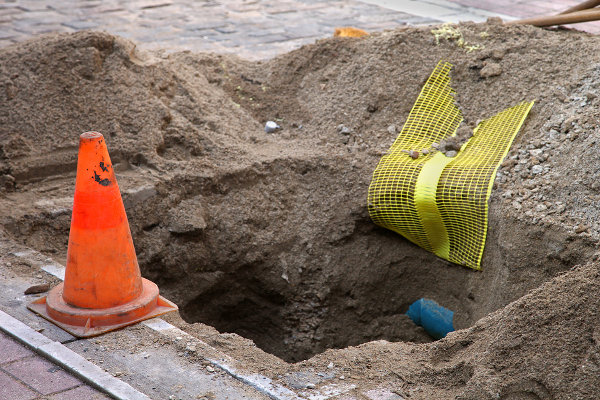The Danger of Hidden Openings

It has to be a terrible feeling. One moment your feet are on what seems to be a solid surface, the next moment they're in mid-air as you begin a fall to a level far below.
That's how a floor opening fall typically happens. A worker in a plant or at a construction site falls through an opening to a surface below or into industrial machinery on a lower level. Chutes for moving materials, elevator shafts and mine shafts have also taken their toll in similar worker falls.
Openings in floors and roofs are often part of the work environment during construction, renovation and demolition. They must be guarded and securely covered so no one can accidentally step in. Half measures won't do it. Many have died in incidents such as these:
- A worker cleaning up after a roofing crew picks up a piece of plywood, not realizing it covers an opening, into which he falls.
- A worker passing through a renovation site steps on a too-small covering placed over a hole and not secured. The board breaks or one end tips into the hole. The worker falls down the opening.
- Skylights and other roof features not designed to bear weight also have been the route to death for workers who stepped or climbed on them.
In industrial plants, workers have fallen from catwalks over machinery or process vessels. Holes in the runway, unguarded sides and ends have allowed workers to fall. Tanks with unguarded openings large enough for a worker to fall in have also taken many lives. Unguarded access points to fixed vertical ladders have also been the scene of fatal falls.
There are safety laws requiring certain types of guards around openings including roof openings and floor openings, smoke shafts, vehicle repair pits, loading dock edges and other openings on walking and work surfaces. Prevention of falls into water or another liquid, or into a hazardous substance or object is also regulated.
By law, temporary and emergency floor and wall openings must be guarded by rails and toeboards or a cover.
The floor opening cover must be capable of supporting any load placed on it. It should be secured positively so it cannot be easily removed, and it should be labeled. The cover should go over the entire opening unless guardrails are installed.
Ladderway floor openings and platforms must be guarded by railings and toeboards on all sides except the entrance. The entrance must be arranged so the person cannot walk directly into the opening without encountering a gate or an offset area.
Guards are also required for hatchways and chute openings, skylight openings, pits and trap door openings and manhole floor openings.
Besides guardrails and nets, fall prevention and fall arrest equipment might be required for you to work safely. Learn to use the fall protection equipment and avoid hazards. Don't wait for an opening; do it now.